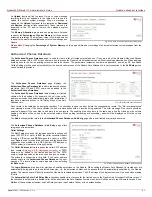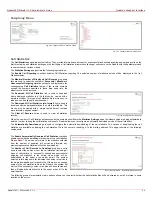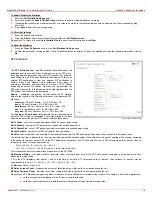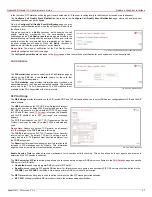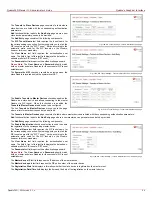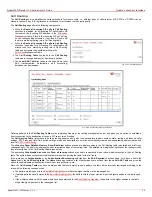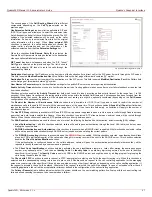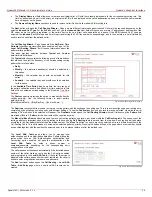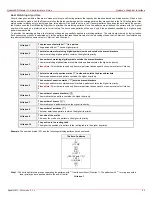
QuadroFXO Manual II: Administrator's Guide
Quadro's Graphical Interface
QuadroFXO; SW Version 5.1.x
53
Gain Control
The Gain Control settings are used to define transmit and
receive gains.
For FXO lines:
Transmit Gain defines the level of voice transmitted from
Quadro to the PSTN network.
Receive Gain defines the volume of voice received by
Quadro from the PSTN network.
For Voice Mail:
Transmit Gain defines the volume of the phone microphone
upon playing voice mails or system messages.
Receive Gain defines the phone speaker volume upon
playing voice mails or system messages.
The Gain Control page offers Transmit Gain and Receive
Gain drop down lists for each line that contains allowed gain
values, which can be set up by the administrator for every line.
Fig. II-97: Gain Control page
Please Note:
If the gain control has been configured incorrectly, DTMF digits may not be properly recognized. Gain control settings are strictly
dependent on the location (country) of Quadro and the phone type. If a private PBX is attached to the FXO port on the Quadro, the voice level in the
handset of the phone connected to the Quadro FXS port may be too loud (depending on the PBX type and configuration). This can be adjusted by
decreasing the FXO Receive Gain to three or to zero.
The Restore Default Gains button restores the default values.
SIP Tunnel Settings
The SIP Tunneling service is used to build a tunnel between Quardos and to use that tunnel for routing the SIP calls through the remote Quadros.
When this service is enabled, slave Quadros should be registered on the master Quadro with the corresponding username/password. With the
appropriate configuration done on the master Quadro, the master device can use the slave Quadros for routing the SIP calls through them and
accessing peers located behind the slave Quadro or recognized by it. This enables the master Quadro to locate the slave, even when the network
settings, like IP address, SIP port and other settings are changed on the slave Quadro.
When the SIP Tunneling service is enabled, virtual tunnels between the master and its slaves are created. A possibility to use the created SIP
tunnels will be automatically enabled in the
table.
Optionally, a SIP tunnel can be mutually established on two Quadros allowing to route SIP calls back and forth. A Quadro can be at the same time
configured both as a slave and as a master to the same remote device, i.e. the slave Quadro can act as a master for the master device it is
registered on. For example, the Quadro1 can act as a slave for the Quadro2. In its turn, the Quadro2 can act as a slave for the Quadro1. With this
configuration and the corresponding routing rules added in the
table on both devices, the SIP calls will be routed from Quadro1 to
Quadro2 and vice versa.
The SIP Tunnel Settings page is used to enable the Quadro as
a slave or master device for SIP tunneling. The page consists of
the following components:
The Enable Tunnels to Slave Devices checkbox enables the
Quadro as a master device and allows you to configure the SIP
tunnels to the slave Quadros. When this checkbox is enabled
the Tunnels to Slave Devices table needs to be configured.
The link Tunnels to Slave Devices moves you to the page
where a list of slave devices needs to be defined.
Fig. II-98: SIP Tunnel Settings page



